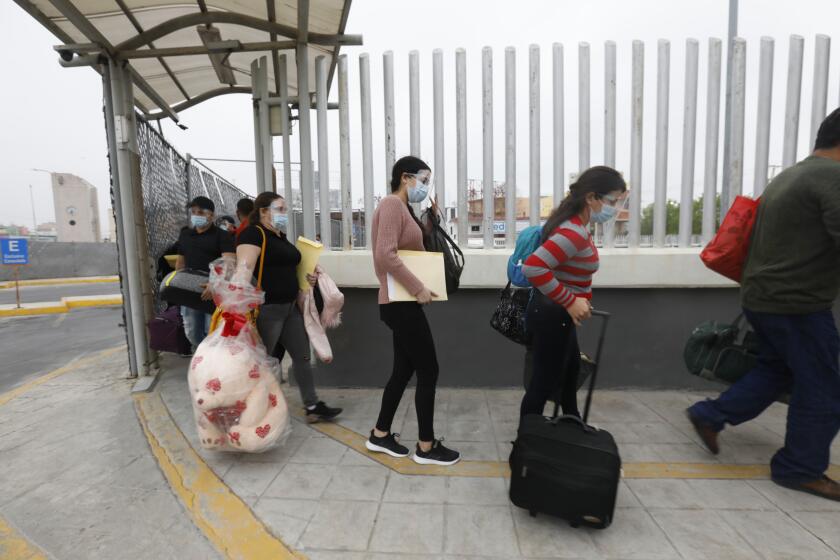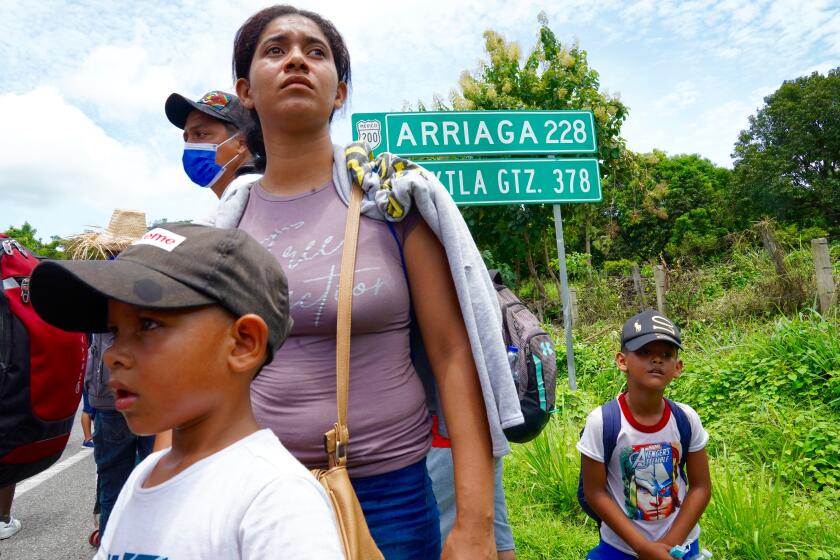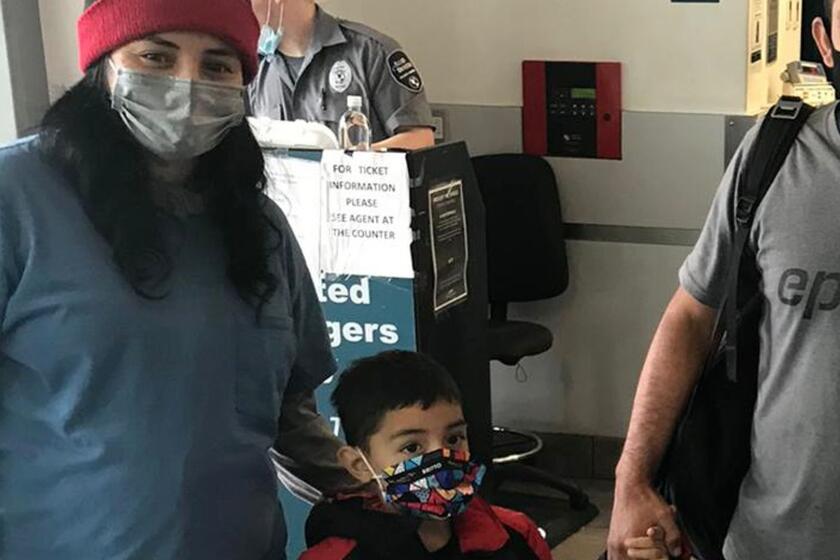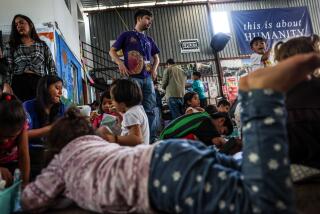Coronavirus rates at the border plunge as a decision on Title 42 looms
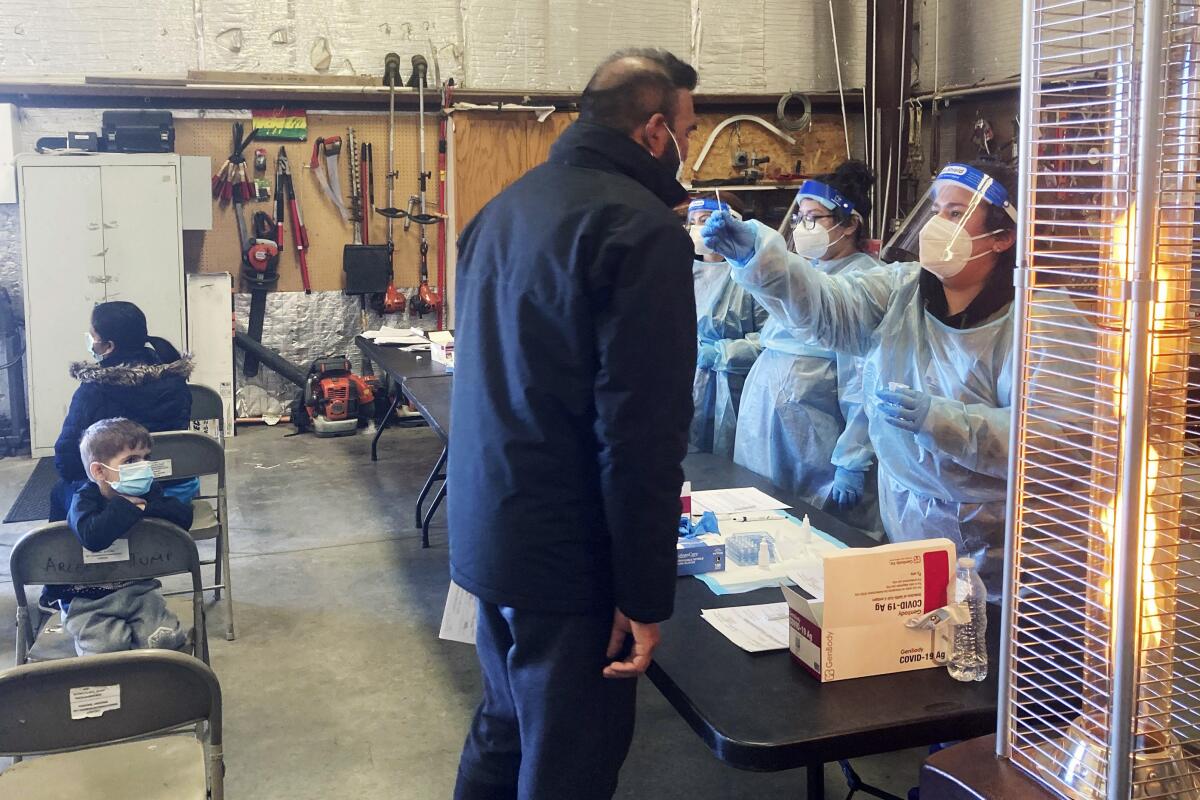
SOMERTON, Ariz. — One by one, a voice called out the names of 169 people just released by U.S. Border Patrol. Migrants rose from folding chairs in a clinic warehouse and walked to a table of blue-robed workers, who swabbed their mouths.
All but two Cuban women tested negative for the coronavirus that February morning. The two were quarantined in motel rooms while other migrants boarded chartered buses to Phoenix’s airport for flights across the U.S.
The two women’s infections were among just seven positive results out of 5,301 coronavirus tests for migrants last month by the Regional Center for Border Health, near Yuma, Ariz. — an infection rate of 0.1%
COVID-19 rates are plunging among migrants crossing the border from Mexico as the Biden administration faces a Tuesday deadline to end or extend restrictions on asylum seekers aimed at limiting the coronavirus’ spread.
Lower infection rates raise more questions about the scientific justification for a public health order that has caused migrants to be expelled from the U.S. more than 1.7 million times since March 2020 without a chance to request asylum.
Although there is no aggregate rate for migrants, test results from several major corridors for illegal border crossings suggest that it is well below the levels that have triggered concerns among U.S. officials.
In California, 54 of 2,877 migrants tested positive the first two weeks of March, according to the state Department of Social Services. That’s a rate of just 1.9%, down from a peak of 28.2% on Jan. 8.
White House rolls out new system aimed at fixing asylum, a process that can drag out for years, was one of President Biden’s promises as a candidate.
In Pima County, Ariz., which includes Tucson, the seven-day positivity rate among migrants didn’t exceed 1.3% in early March and dropped to 0.9% on March 10. The seven-day rate topped 5% on only two days during the last three months of last year.
Then, as the Omicron variant spread, it surged to double digits for most of January, peaking at 19.2% on Jan. 12 and falling below 5% on Feb. 12.
McAllen, Texas, the largest city in the busiest corridor for illegal crossings, has a higher rate among migrants — 9.2% on March 2 — but it is also falling and is consistently lower than the general population. Only two of 24 border counties have had high rates in the general population: Hidalgo, which includes McAllen, and Yuma in Arizona.
The rate among migrants in McAllen peaked at 20.8% the last week of January, when it was double that in the general population. It was only 1.4% among migrants the last week of November, when the general population’s was at 6.2%.
As mask mandates have lifted, the Centers for Disease Control and Prevention is under mounting pressure to fully restore asylum by ending the Title 42 order, named for a 1944 public health law.
Critics say it has been an excuse to wriggle out of asylum obligations under U.S. law and international treaty.
Title 42 is a public health policy that’s being used to determine whether immigrants can cross the border. Here’s how it works.
Justin Walker, a federal appeals court judge in Washington, wrote this month that it was “far from clear that the CDC order serves any purpose” for public health. Walker, who was appointed by President Trump, noted that the Biden administration hasn’t provided detailed evidence to support the restrictions.
“The CDC’s order looks in certain respects like a relic from an era with no vaccines, scarce testing, few therapeutics, and little certainty,” Walker wrote for a three-judge panel.
CDC Director Rochelle Walensky noted falling rates when she ended asylum limits on unaccompanied child migrants March 11, while keeping the limits for adults and families with children. In August, U.S. border authorities began testing children traveling alone in their busiest areas: positive results fell to 6% in the first week of March from a high of nearly 20% in early February.
The White House and Homeland Security Department have said decisions on Title 42 rest with the CDC. Walensky told reporters Wednesday that the agency was reviewing data ahead of next week’s deadline, noting that its two-month renewal in late January came near the peak of the Omicron variant.
Scientific arguments for Title 42 have met with skepticism from the start.
The Associated Press reported in 2020 that then-Vice President Mike Pence directed the CDC to use its emergency powers, overruling agency scientists who said there was no evidence it would slow the coronavirus.
Anne Schuchat, the second-highest ranking CDC official until May, told members of Congress after her departure that the asylum limits lacked foundation as a public health measure when introduced. “The bulk of the evidence at that time did not support this policy proposal,” she said.
Biden said he wanted to expel more migrant families under Title 42. The policy is fueling border kidnappings and extortion of U.S. relatives.
Title 42 also has supporters. In a ruling this month in a lawsuit over the order, U.S. District Judge Mark Pittman in Fort Worth said: “There should be no disagreement that the current immigration policies should be focused on stopping the spread of COVID-19.”
Even while large-scale expulsions were carried out under Title 42, the U.S. processed more than 2.8 million cases under normal immigration laws, which allow people to seek asylum.
With costs and strained diplomatic relations limiting expulsions to many countries, migrants are often released to nongovernmental groups and ordered to appear later in immigration court.
The groups test for the coronavirus. In El Paso, Annunciation House saw positive results plunge to about 2% among the roughly 175 migrants it tested daily in early March, said director Ruben Garcia. Positives were close to 40% at the height of the Omicron-fueled surge, he said.
A woman and her three children tried to request asylum at the San Ysidro Port of Entry, but Customs and Border Protection officials told them they couldn’t come in.
In Arizona, at the Regional Center for Binational Health, monthly positive rates peaked at 3% last year.
Still, Amanda Aguirre, its president, is wary about lifting Title 42. “My concern is that at any time we’re going to see new variants coming into this area,” she said.
The Val Verde Border Humanitarian Coalition, which tests migrants in the busy Del Rio, Texas, area, said it went several weeks without a single positive.
“Yesterday there was one positive and today there was one positive — that’s out of hundreds tested,” the group wrote last week in response to questions.
More to Read
Sign up for Essential California
The most important California stories and recommendations in your inbox every morning.
You may occasionally receive promotional content from the Los Angeles Times.
